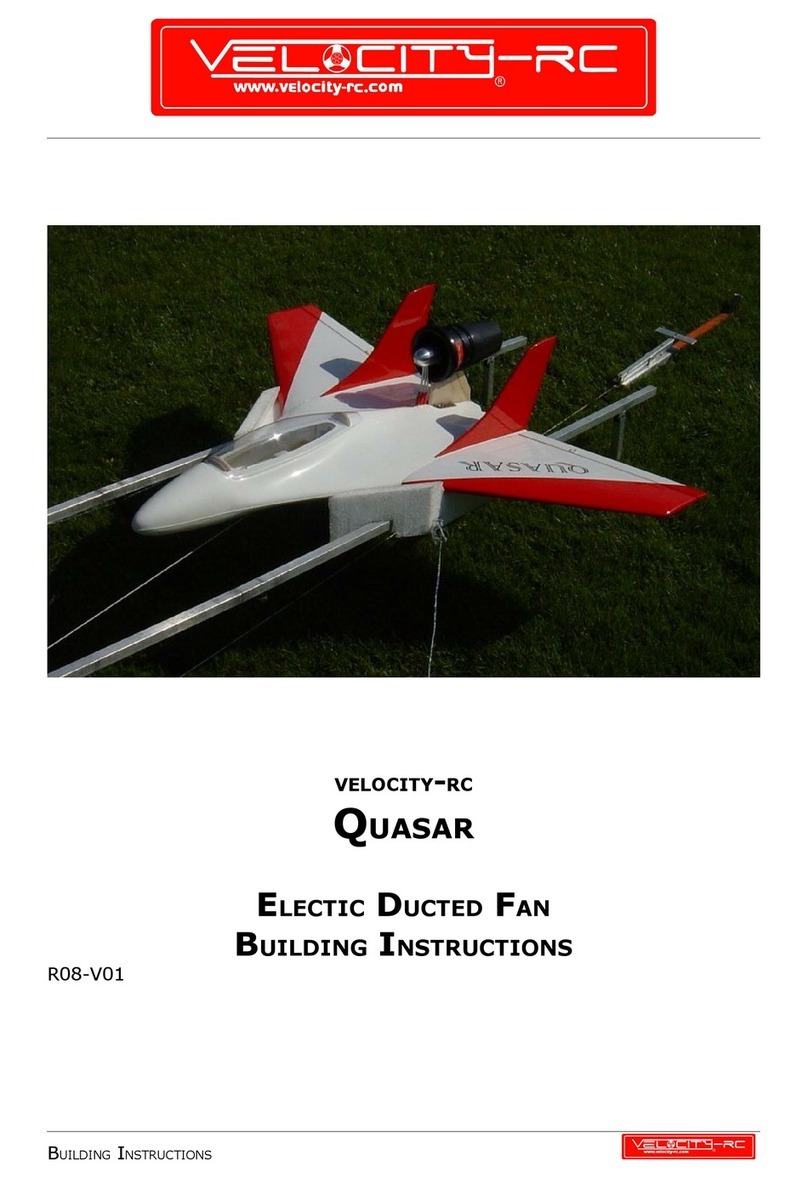T-33 SHOOTING STAR PAGE 10 OF 17
PREPARING THE FUSELAGE
First assemble the WM400 Fan
accor ing the WM400 Instruction
manual
Place the WM400 fan through the fan
access oor into its position at the en
of the intake tube. Cut out the nee e
place for the motor cables or copper
stripes into the intake uct. Check for
the correct position of the fan mounts
to the flange at the en of the intake
uct. Be sure the fan housing is well
inserte into the ucting; it shoul be
slotte into the uct snugly.
In the kit, there are two semi roun e
woo formers that serving both
purposes – servo elevator mounting
an fan support.
The formers are being installe into the
fuselage by having one si e of the
formers epoxy first then follow by the
next former ue to the limite space
opening hatch esign on the fuselage
Picture shows the fully assemble
formers for WM400 Fan an elevator
servo insi e the fuselage.
Just sli e this preassemble formers
more to the front so they will act as
support for the fan. Glue in the former
to its final position.
Once epoxy is cure , rill four holes for
the screws to allow fan housing to be
mounte .
Buil a thrust tube from a thin A3 foil.
A template at the en of the manual is
provi e for making a thrust tube
mounte at the back of the wm 400.
Print out the 3 pages from this template
an tape them together. On the foil, let
an overlap of 10mm an use 3M tape to
fully seal up gap to form up a tube.
BUILDING INSTRUCTION




























